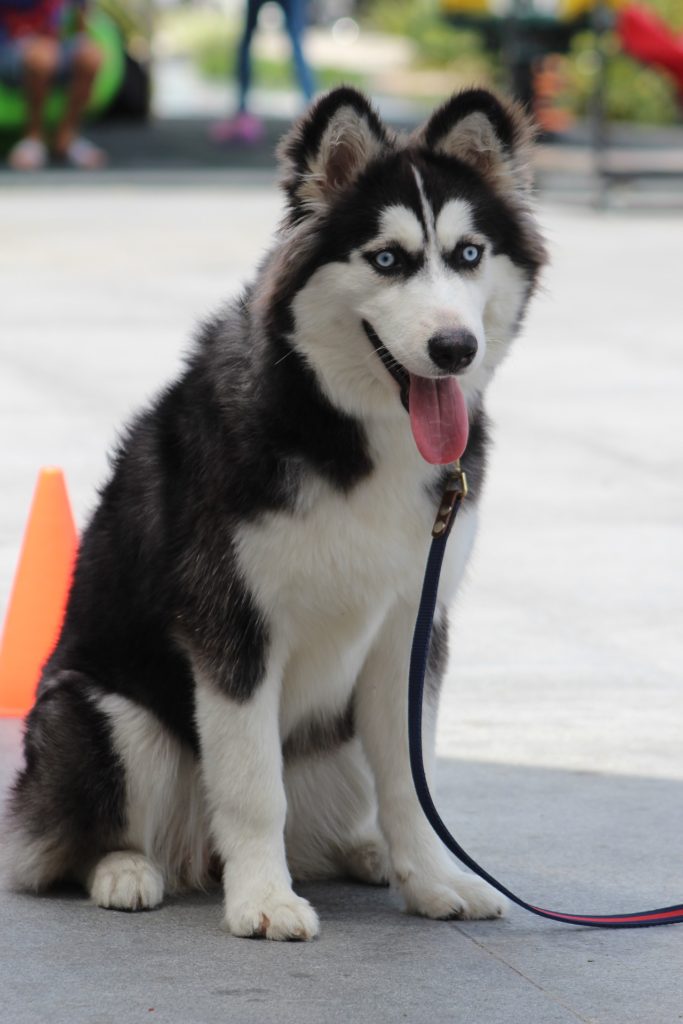
Often when a person adopts a new adult dog, they find that the dog has a problem with jumping on them and others, and the jumping is simply not acceptable behavior. The dog needs to be trained not to jump on people. But many dog owners have no idea how to train a dog not to jump. This can be a challenge for any dog owner.
No matter what type of dog you have, it is very important to ensure that the dog is not jumping on people. In fact, this is sometimes one of the first things a new dog owner has to correct, even if it is not part of a core dog obedience training program.
Training a dog not jump is one of the most important behavior modifications a dog should learn, and usually one of the first things they should be taught, right after learning to sit. This article will give you the steps to train a dog not to jump.
When a dog jumps on someone, he can literally put that person at risk. If that person were to fall, the dog could hurt him badly. It’s extremely important that dogs learn not to jump on people. Not only that, if the dog has been outside and has dirty paws, you certainly don’t want that all over your clothes. 🙂
The first step in teaching a dog not to jump is to give the dog a command. Give the command “no jumping”, or something similar, and wait for the dog to stop jumping before you give your reward. If your dog is already jumping, then wait for him to stop jumping before you give the command. Don’t pet the dog or praise him for jumping.
Don’t assume that the dog understands what you are trying to teach him. Be as firm and matter-of-fact in your command as you can.
If your dog is not jumping when you say “no jumping”, then give a treat, praise, or pet. If your dog jumps after you give the “no jumping” command, then wait until he stops jumping and give him the treat, praise, or pet. Then give the command “no jumping”.
Next, tell the dog to “get down” or “stay down”. Wait until the dog is no longer jumping and give him the treat, praise, or pet. Again, repeat this if you haven’t already done so. Teaching a dog not to jump takes persistence and patience, but it is well worth the effort.
It’s important to note that there is a difference between a jump and a bound. A jump is a step or two and the dog is usually easily controlled. A bound is more like a leap, and the dog is usually difficult to control. If you put on a leash, a bound may be launched into a leap. You most assuredly don’t want the dog to be bounding or leaping on you, or anyone else. With a big dog, it can be dangerous.
If your dog is constantly bounding or leaping on you, then leash the dog and disrupt jumping by instructing the dog to “down” or “stay down”. When he is quiet, take the leash off again. Repeat this process as often as needed until the dog learns not jump, bound, or leap on you (or on anyone else).
Often a dog who is friendly jumps on you because he or she is happy to see you, which is understandable, but still not acceptable behavior. If you’ve been out of sight of the dog for a while, such as gone to work or gone grocery shopping, a dog might have anxiety separation fear, and be overjoyed at seeing you again, and jump. This is behavior that should be corrected. They can be happy and wag that tail like no tomorrow when they see you, but refrain from jumping on you.
It’s also important to have consistency in training a dog not to jump. The command words used should be the same for all in the home for the dog. The training, which will later turn into routine, should be the same for everyone also. It will only confuse the dog if different family members use different commands and don’t follow the no jumping routine for the dog.
Some breeds of dogs are much more excitable and energetic, or more stressed, and might need some calming dog chews to help calm them down. There are various calming dog chews to choose from and for all sizes of dogs. Some dogs have separation anxiety, some get stressed over fireworks or bad weather. These different things can cause a dog to want to jump or leap at you, even after they’re trained not to jump.
For times such as this, and perhaps every day if needed, you can safely give your dog calming dog chews to help manage the excitement or stress. It calms the dog down but doesn’t hurt them, with natural dog chews such as Pet Naturals Calming for Dogs and Cats – Naturally Sourced Stress and Anxiety Calming Ingredients for Behavior Support – Vet Recommended.
A dog is a happy and loving companion. Dogs who jump up at you, jump on you, or jump on anyone else can be training not to jump. It does take a bit of effort on your part, being kind but firm with the dog, and consistency. There should be a firm rule against leaping on people, and it must be enforced and an everyday routine.



